Many gardeners leave rose hips on the bush at the end of the gardening season. The rose hips are the fruit of the rose bush, and can be harvested for culinary purposes, including for drying to make a delicious healthy tea. Learn how to dry rose hips for tea, and enjoy the fruit from your roses, throughout the seasons.
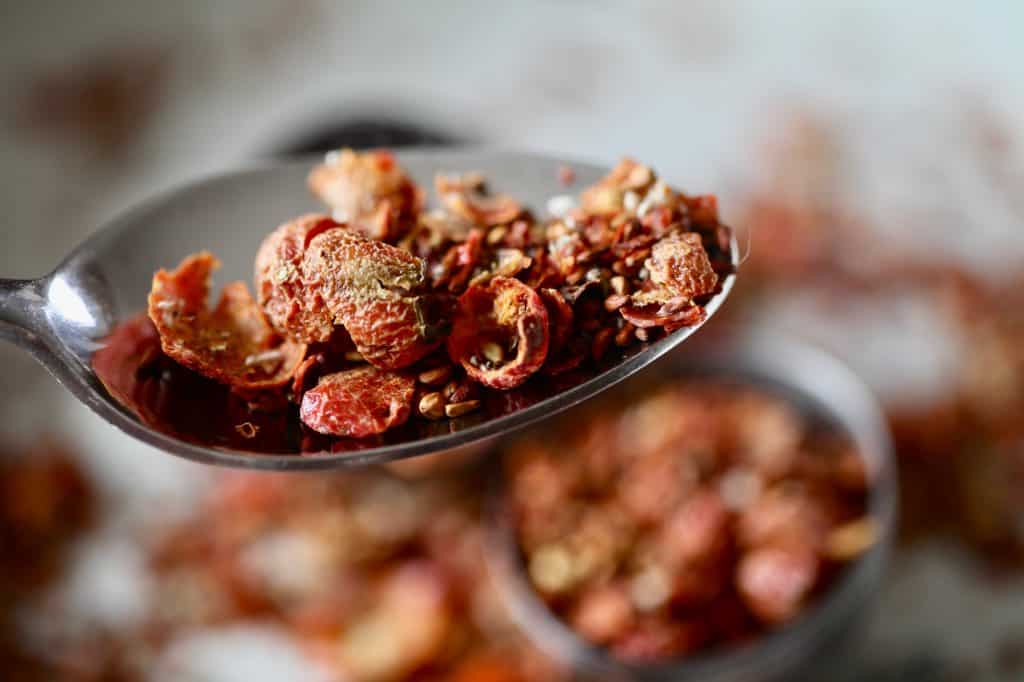
If you have rose plants growing in your own garden, you will likely have rose hips that form and grow throughout the summer months.
At the end of the season, when the rose hips turn red in late summer or early fall, you can harvest the rose hips to dry for tea.
The best time to harvest is after the first frost, for a sweeter flavor.
Rose hips are edible, and can be used when ripe for culinary purposes. Throughout time rose hips have long been harvested and dried, and used as a nutritious and delicious tea.
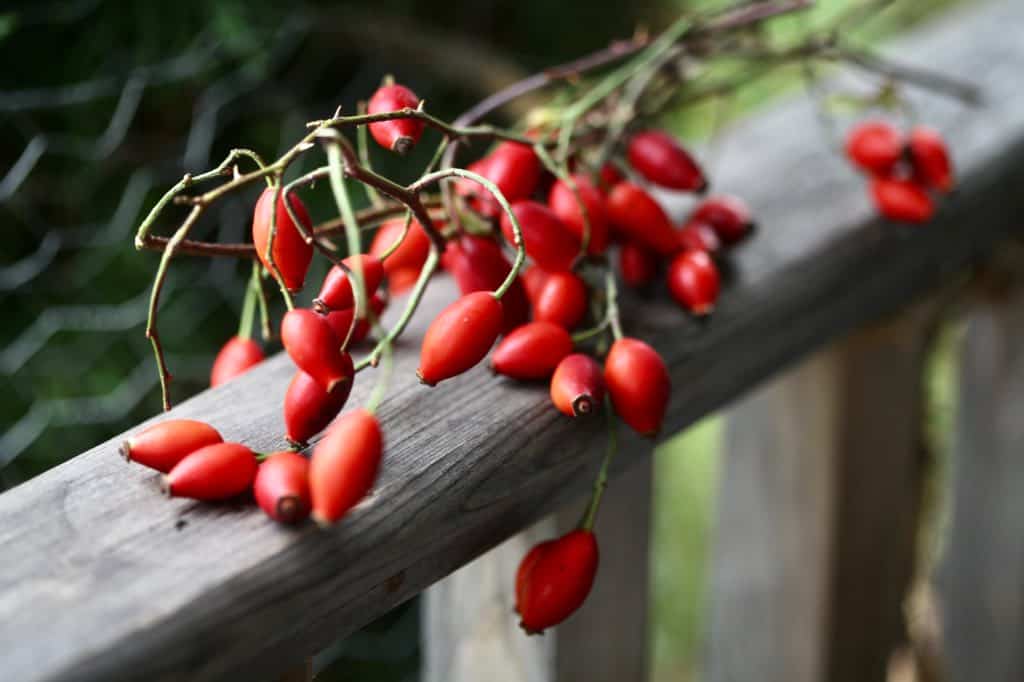
There are many other ways in which to use rose hips. This year I am also planning to make a rosehip syrup.
Make sure however to only harvest from organic bushes, which are free of exposure to pesticides and other chemicals.
Rose hips are high in Vitamin C content, and have antioxidant properties,.
The effects of brewing conditions on antioxidant properties of rose hip tea has been studied and published in the National Library of Medicine, PubMed Central.
Reported results from the study demonstrated the optimal time for brewing rose hip tea was 6 to 8 minutes, and the best temperatures at which to steep were 84°C to 86°C ( that's 183.2°F to 186.8°F).
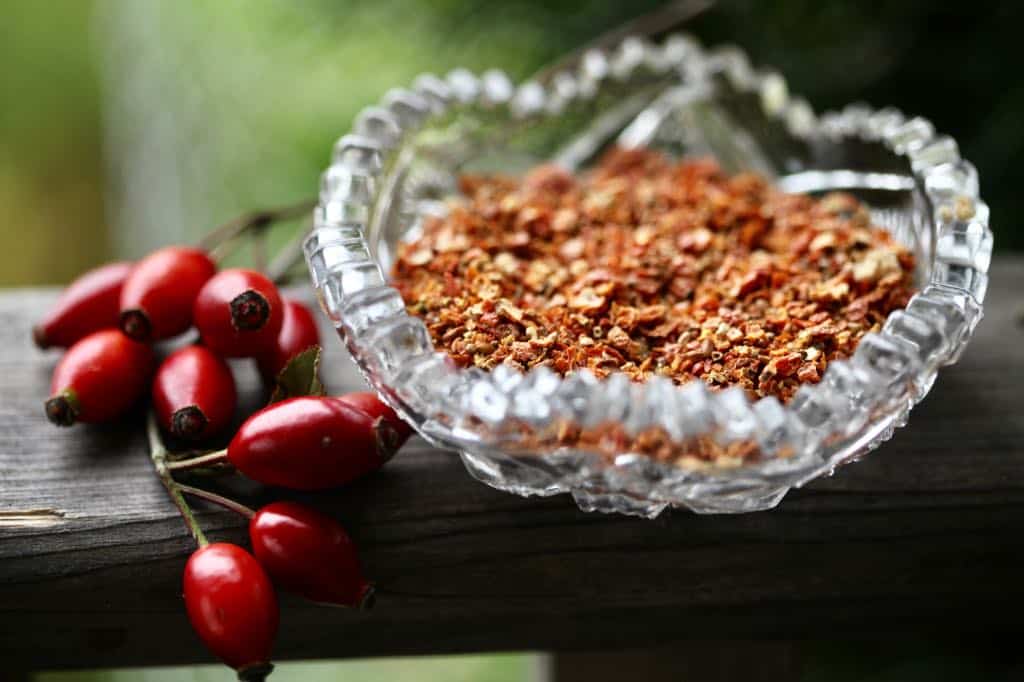
How To Dry Rose Hips For Tea
Rose hips are the edible fruit of the rose, which can be dried to make a delicious tea. Inside the fruit are tiny hairs, which can be irritating if consumed. These hairs can be removed, either before or after the drying process. Rose hips can be dried whole or cut into pieces, using different drying methods, such as a food dehydrator, drying in the oven, or air drying.
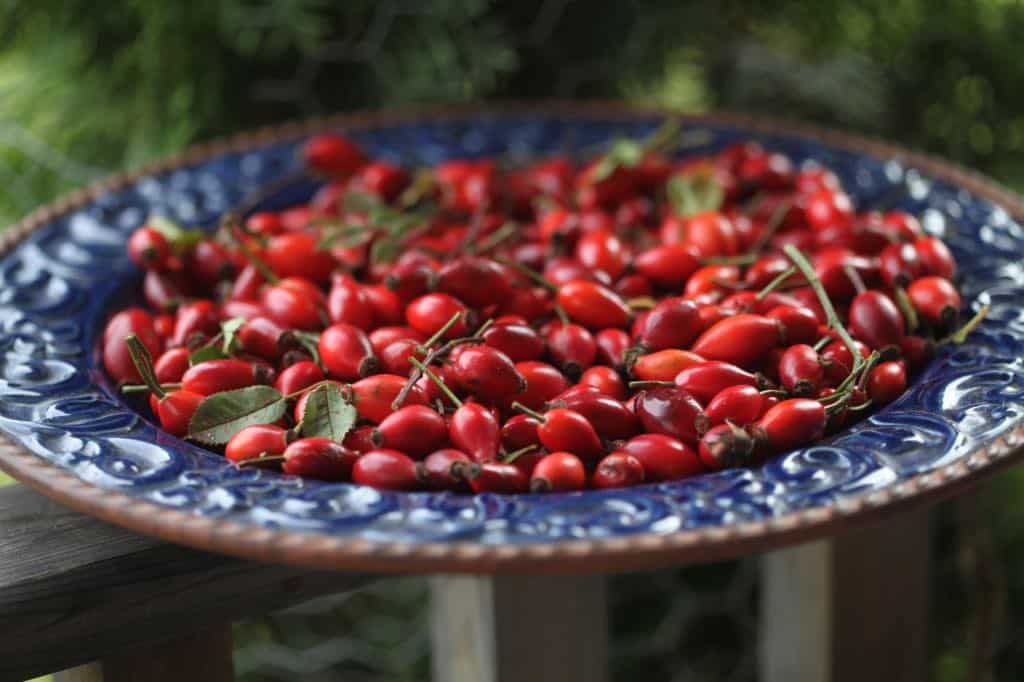
Drying Rose Hips For Tea
Drying rose hips for tea is a fairly simple process.
Depending on the size of the rose hips, the fruit can be processed to remove the inside hairs either before drying, or processed afterwards.
Larger rose hip fruit are easier to cut in half when they are fresh, and therefore removing hairs from larger fruit before drying makes a lot of sense.
Smaller rose hips, such as those from wild roses or rosa rugosa, are often small like berries. These rose hips are easier to dry in the whole state, and then can be processed to remove the hairs after drying.
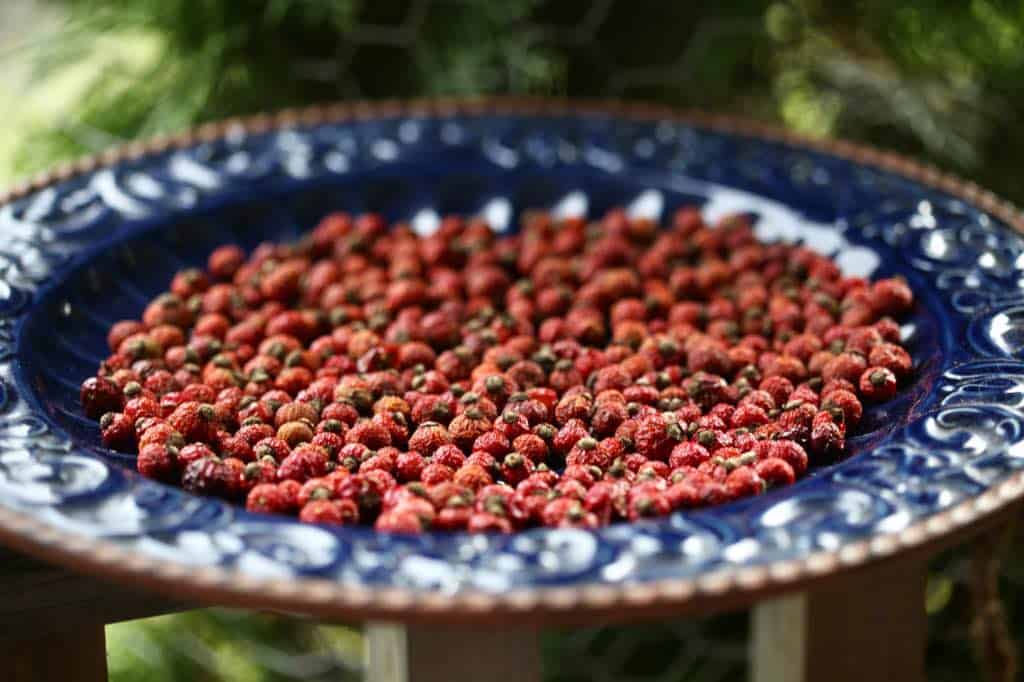
Preparing The Rose Hips
After harvesting the rose hips from the rose bushes, bring them inside for processing.
If you are not yet ready to tend to the rose hips, place them into the fridge in a brown paper bag. This will help to keep them plump and fresh until you are able to process them.
I find that fresh rosehips left on the counter start to shrivel after just a few days.
Rose hips that are fresh are easier to cut.
Washing The Rose Hips
- Washing the rose hips is important, to remove any garden debris or bug residue.
- Run the roses under cool water to give them a good washing.
- Then set them onto a cutting board, to get them ready for the next step.

Removing The Hairs From Fresh Rose Hips
Decide if the rose hips will require processing before drying, or if they will be dried intact and processed later.
If you plan to process before drying, the next step is to remove the hairs from the fresh rose hips.
Preparing and processing larger rose hips involves removing the inner contents, which are the seeds and hairs.
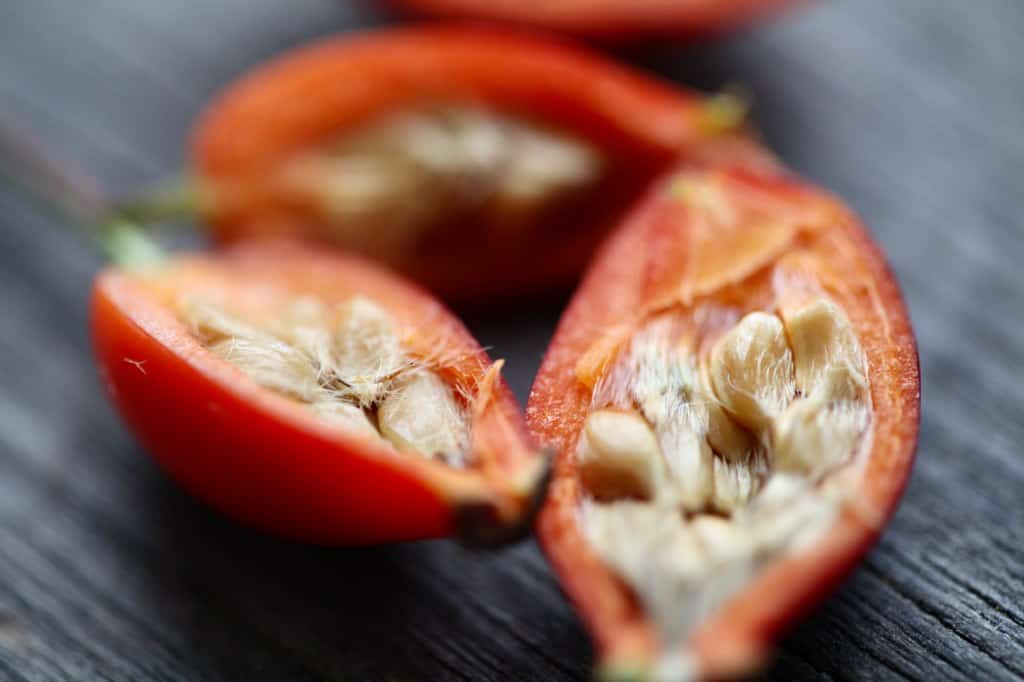
The process to remove the hairs involves cutting the fresh rose hips in half, and scooping the seeds and the hairs out with a sharp spoon or knife.
Smaller rose hips however, such as those from wild roses, are quite a challenge to cut and process when fresh. These rose hips are so tiny, which makes the cutting process tedious and difficult.
These smaller rose hips are generally dried whole, and then crushed and sifted post drying, removing the hairs in this manner.
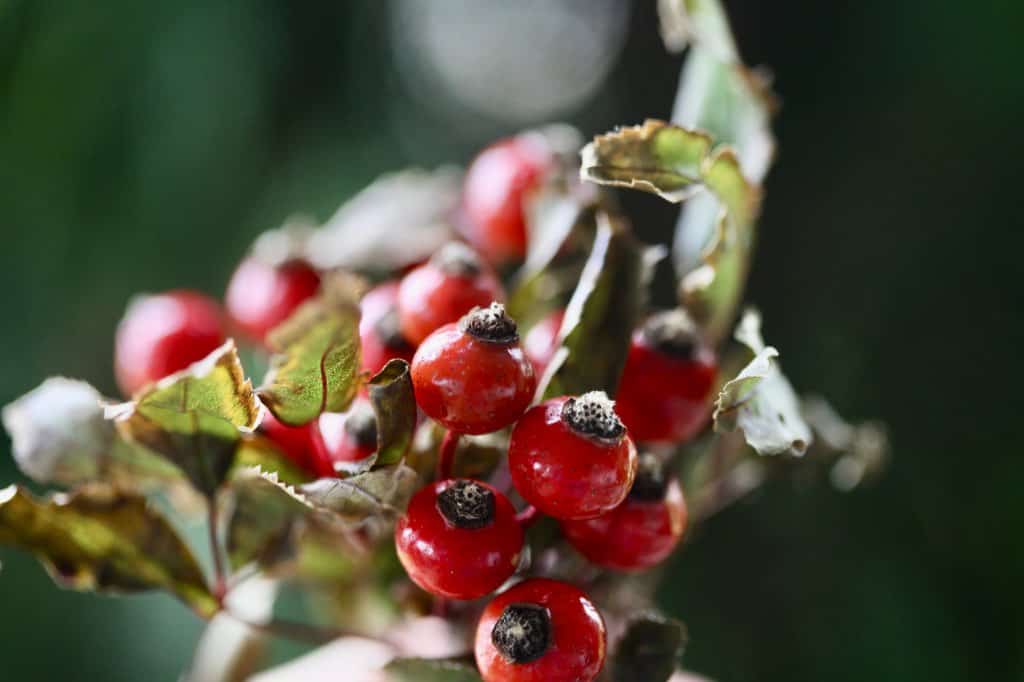
Removing The Hairs From Larger Fresh Rose Hips:
- After rinsing, place the fresh rose hips on a cutting board.
- Remove the blossom end and stem from each rose hip with a sharp knife.
- With the knife or spoon, scrape the inner halves of the rose hips, gradually removing the contents inside. This step involves a bit of effort, as the hairs generally have a good grasp on the fruit.
- Even with this scooping method however, some hairs may still remain inside the carved out rose hips, so another step may be required to completely eliminate them.
- This can be done after drying, by crushing the dried rose pieces with a mortar and pestle or food processor, and then sifting out the hairs.
- Once the rose hips have been scooped, I like to give them another good rinse under cool water, to help remove any further hairs if I can.

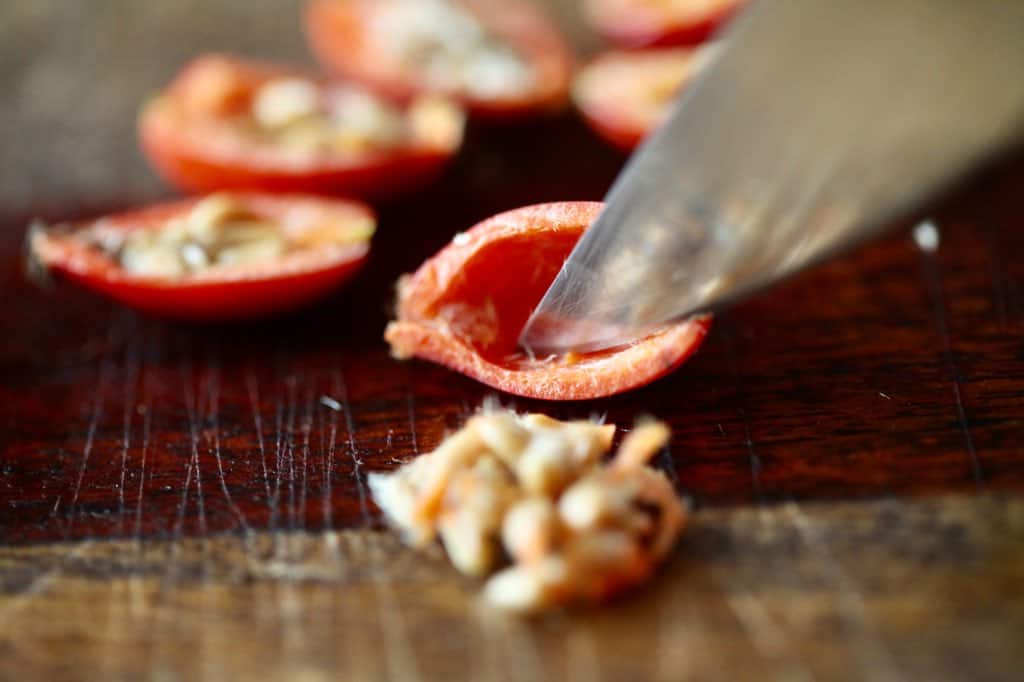
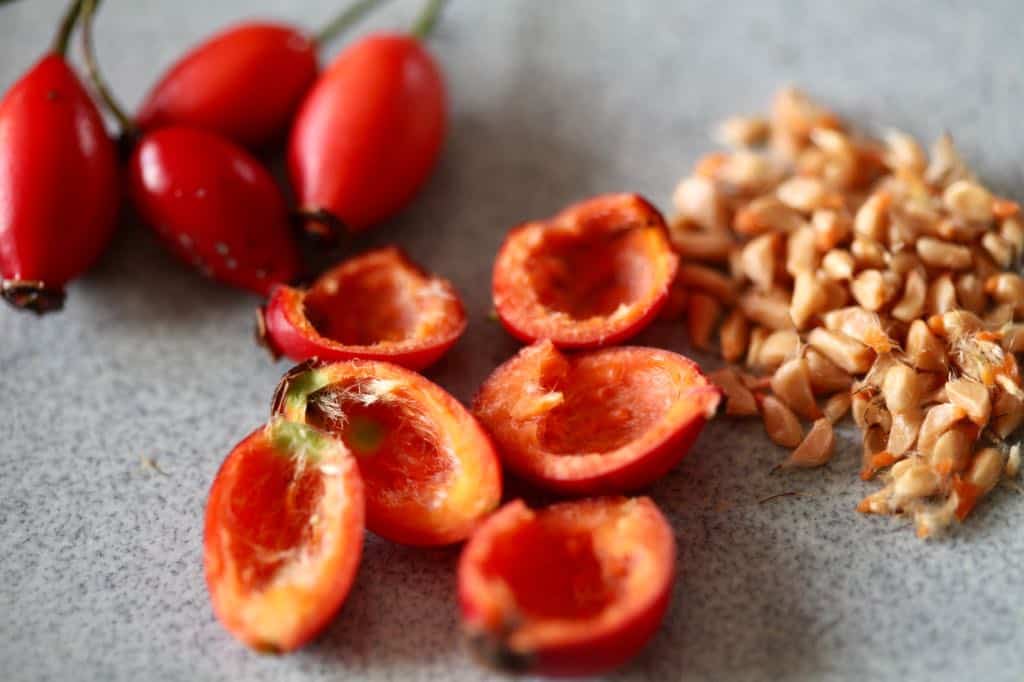
Now it's time to dry the rose hips.
Drying Rose Hips
Now that the rose hips have been prepared, it is time to dry them.
You may also have chosen to skip the preparation step completely if your rose hips are berry sized, and you have decided to dry them whole.
That is perfectly fine. Just remember however, that you will need to be process the whole dried rose hips before using them to make tea.
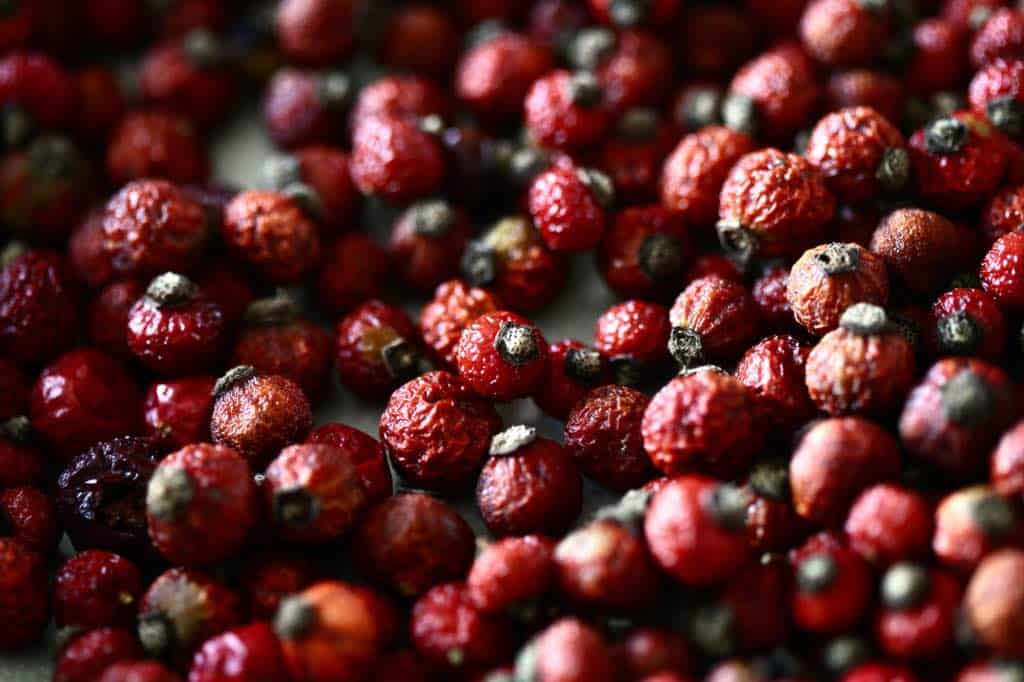
There are three common methods used to dry rose hips for tea.
These three drying methods include:
- air drying
- drying in a food dehydrator
- and drying in the oven
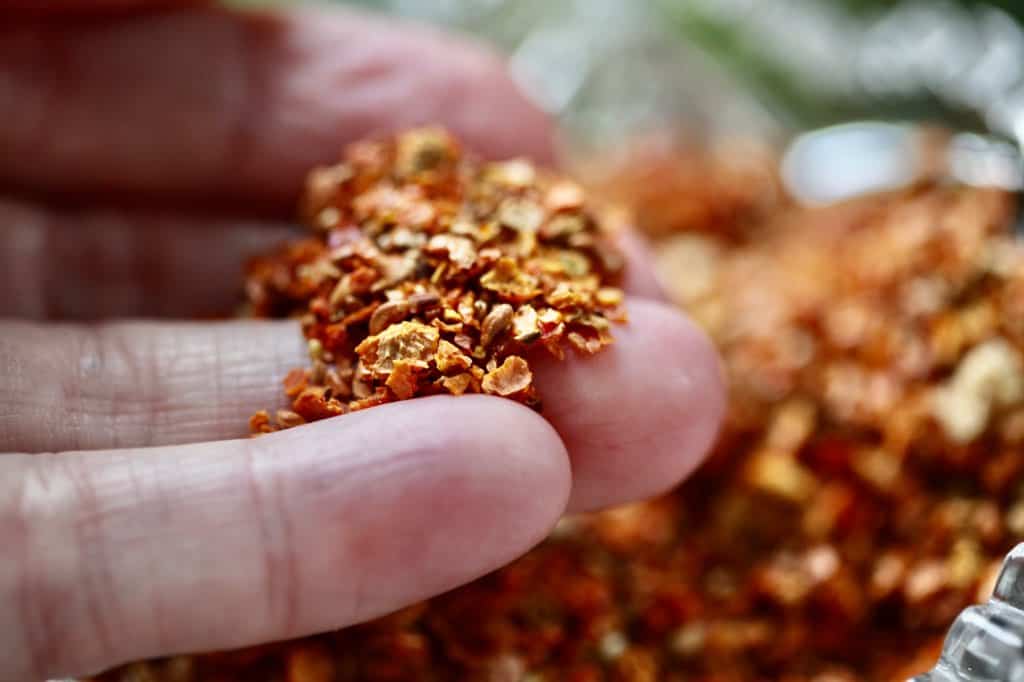
Now let's have a look at each drying method:
Air Drying Rose Hips
- Air drying rose hips is an option for drying if you are not in a rush to have your dried rose hips immediately.
- The air drying process can take approximately a month, depending on the size and moisture content of the rose hips themselves.
- While air drying will take some time, it is a mostly hands off and natural drying process.
- The air drying method can be used for the processed rose hips with the seeds and hairs scooped out. It can also be used for the smaller intact rose hips.
- Processed rose hips will dry more quickly than the intact hips, for obvious reasons.
- Smaller rose hips will still air dry well, by leaving them intact, although it will just take a bit longer.
- The rose hips will start to shrivel within just a few days. Within a month or so they will be firm and dry.
- Air dried rose hips can be stored in an air tight container, such as a mason jar with a lid, until ready to be processed to remove the rose hip hairs.
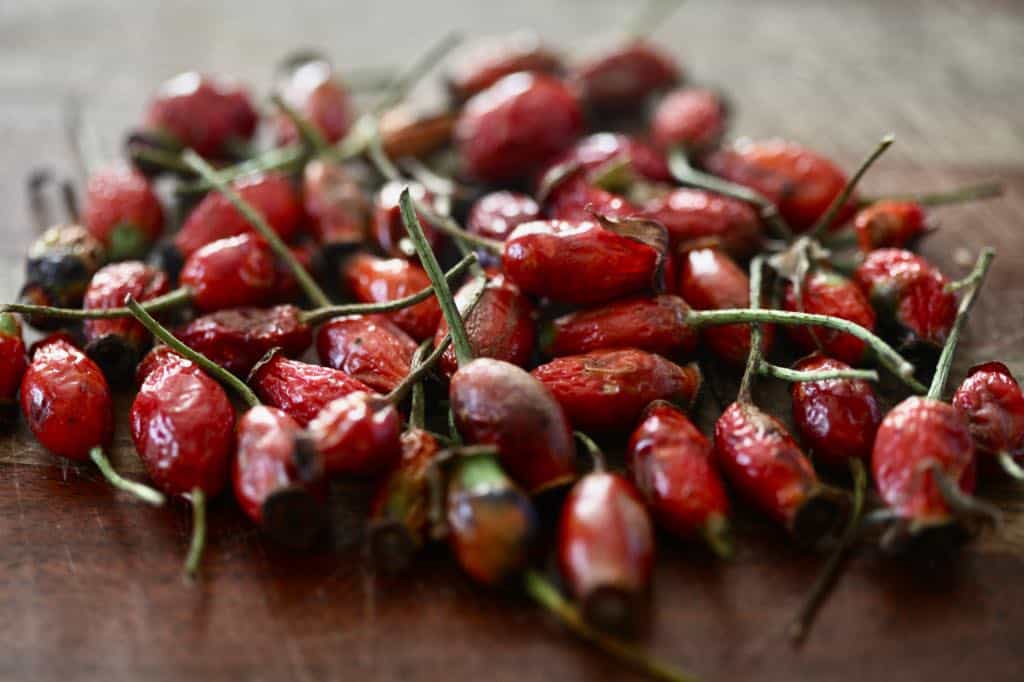
Drying Rose Hips In A Dehydrator
- Rose hips dry well in a food dehydrator.
- Multiple racks in the food dehydrator allows you to dehydrate many rose hips at once.
- Place in a single layer on the dehydrator rack.
- Dry the rose hips on the fruit and vegetable temperature setting, at 135°F.
- The low temperature, as well as the fan and air movement inside the dehydrator, will help to dry the rose hips slowly and efficiently.
- The length of time for drying is variable, depending on the rose hips themselves, as well as the type of dehydrator used. Drying processed rose hips will be faster than intact rose hips.
- Allow the fruit to guide you, and remove them from the dehydrator when they are completely dry.
- The rose hips should be firm and inflexible when completely dry.
- Store the dried rosehips in an airtight container until ready to process for hair removal.

Drying Rose Hips In The Oven
- Drying rose hips in the oven is a simple process.
- Make sure that you set the oven to the lowest temperature setting. This low heat will dry and dehydrate the rose hips, rather than cook them.
- The lowest temperature setting on my own oven is 170°F, and this setting works perfectly for drying rose hips.
- A convection oven will have even more drying power, with the addition of a fan.
- To dry in the oven, place the rose hips in a single layer on a baking sheet.
- Set the sheet into the oven to dry.
- Drying time will vary, depending on the temperature, and the size of the roses.
- I dried tiny wild rose hips in the oven. They were well dried within 5 hours.
- Rose hips are dry when they become hard and solid. There should be no evidence of softness in the flesh of the fruit, and no flexibility when squeezed.
- Store oven dried rose hips in an air tight container, until you are ready to process them to remove the inside hairs.

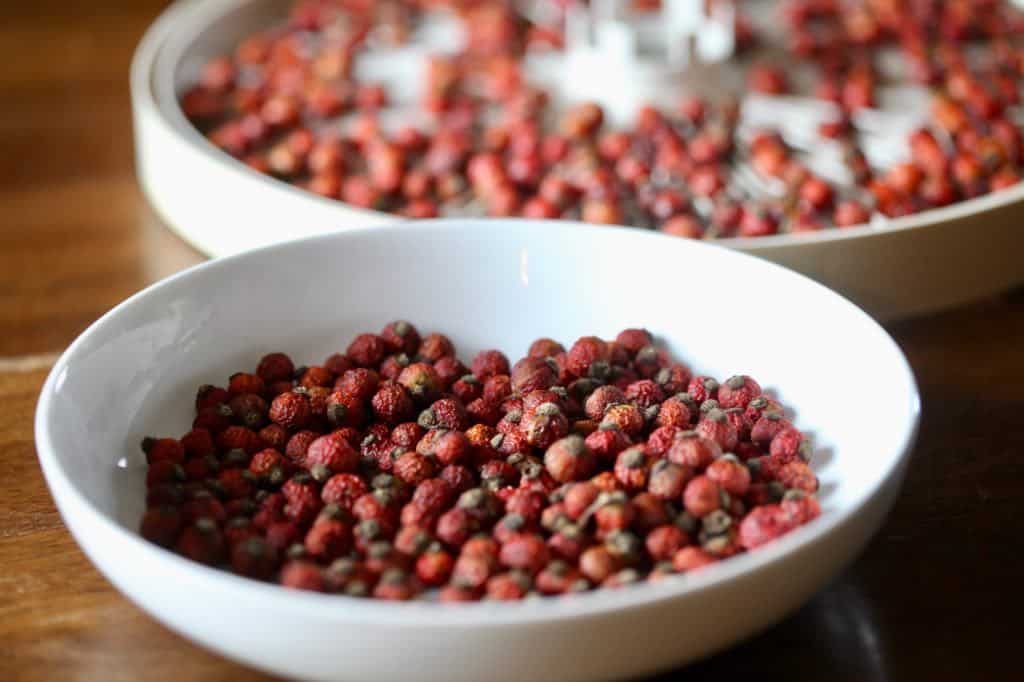
Removing The Hairs From Dried Rose Hips
There are a number of different ways to remove the hairs from dried rose hips.
You may want to remove remaining hairs from processed and dried rose hips, which still have a few hairs remaining in the fruit.
To remove the last hairs:
- sometimes just shaking these dried rose hip parts in a bottle will help to remove the hairs.
- The fine hairs tend to cling to surfaces.
- This method will cause the fine hairs to stick to the bottle, and the rose hip pieces to settle out.
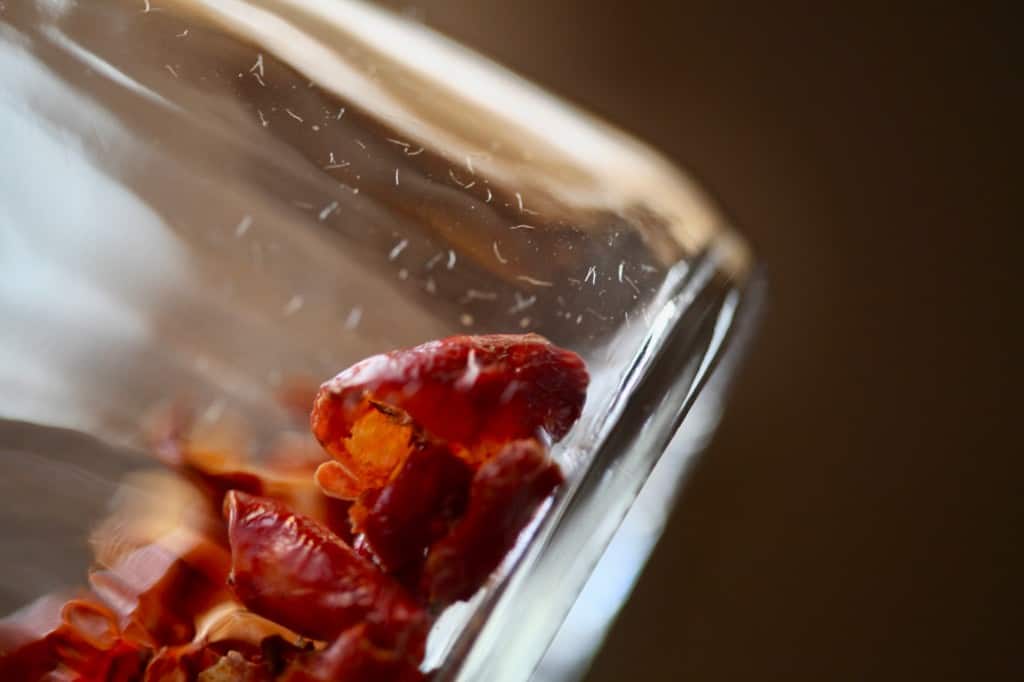
For rose hips that have been dried intact, crushing them is the first step to removing the hairs.
Crushing Dried Rose Hips
- The rose hips can be crushed with either a mortar and pestle, a food processor, or even a coffee grinder. Crush the dried rose hips into small pieces, rather than pulverizing them too finely into a powder.
- If you notice that some rose hips are not completely dry once they are crushed, that's okay. Just set them aside on a baking sheet and allow them to dry out until completely dry.
- I made the mistake of over chopping the rose hips with the coffee grinder, and crushed the pieces a bit too finely. This resulted in very small particles of rose hips sifting out of the sieve along with the hairs.
- I plan to prevent this with the next batch, by reducing the grinding time.
- I really liked using the coffee grinder to chop the smaller dried rose hips, as it was very efficient and easy.
- Find what works best for you, and learn from your crushing mistakes.
- The mortar and pestle does a better job than the food processor, at crushing the smaller dried rose hips. It does take a bit of effort however, with lots of elbow grease and a strong pair of hands, to process the rose hips using this method.
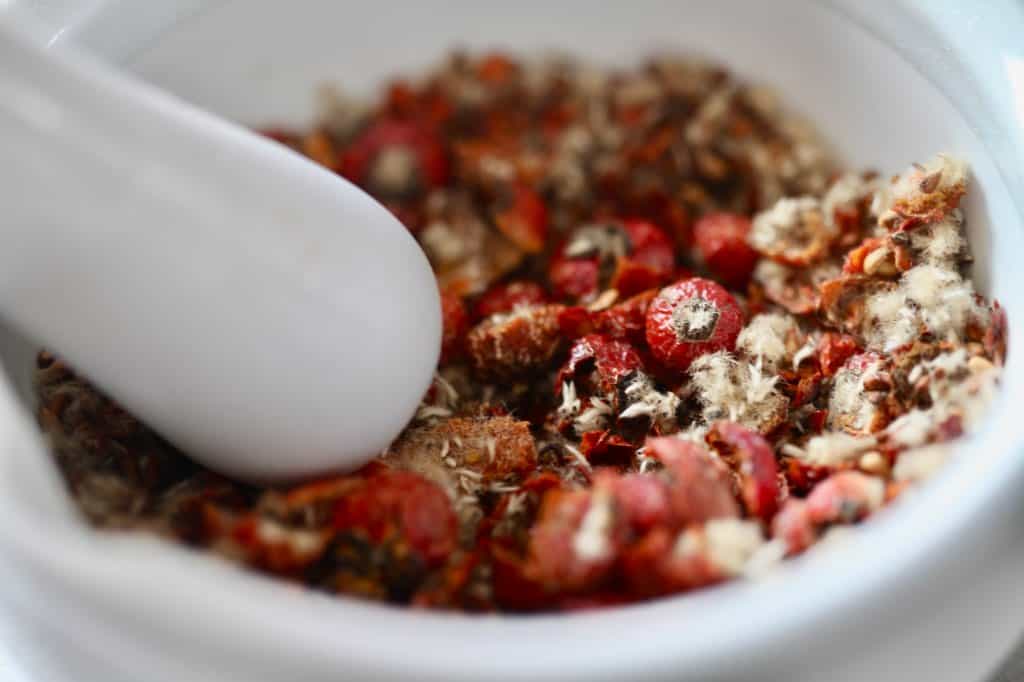
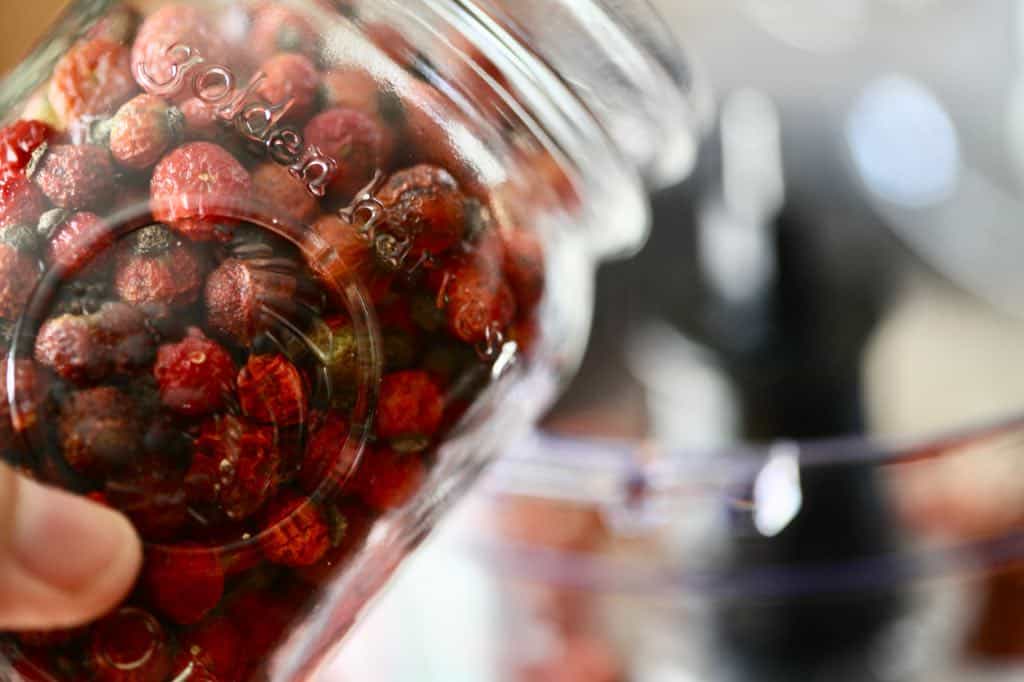

Sifting Dried Rose Hips
- Next the pieces can then be sifted with a fine sieve, to remove the small hairs.
- Sifting allows the fine hairs to easily separate from the rose pieces, eliminating them from the fruit.
- The best way to sift the dried rose pieces is to hold the sieve over a bowl, and gently sift back and forth.
- The hairs are easily sifted out, with just the rose fruit and some of the seeds remaining.
- It's okay to include some rose seeds in your tea.
- Sometimes clumps of rose hip hairs will remain together while sifting. They will raise up to the surface in the sieve.
- It's easiest just to pull these clumps of hairs out with a spoon, to remove them from the rest, rather than trying to sift them out.
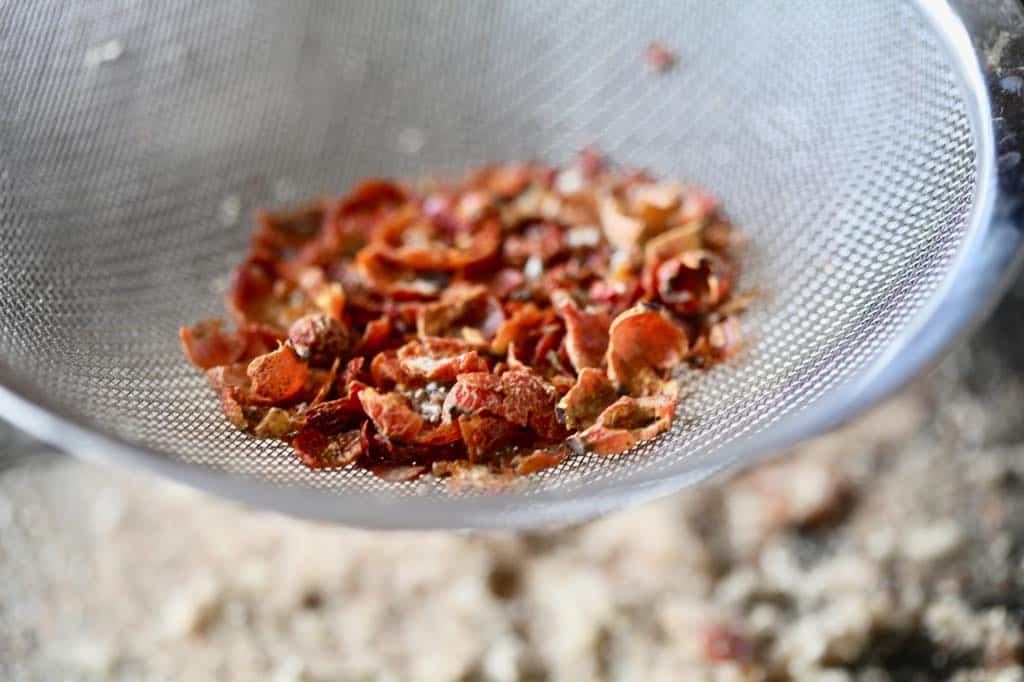
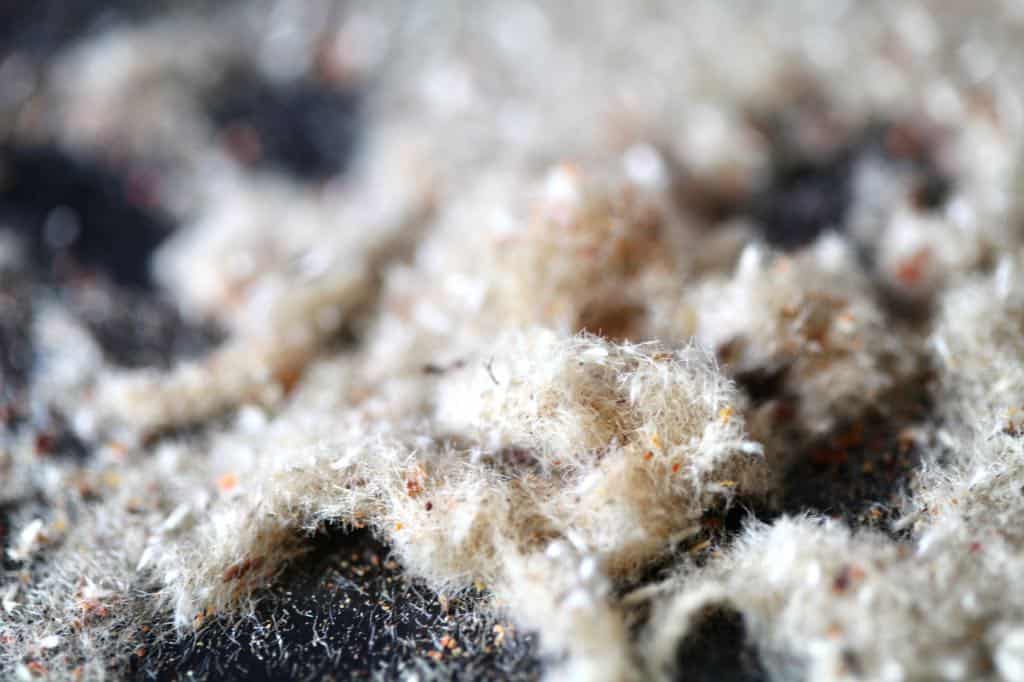
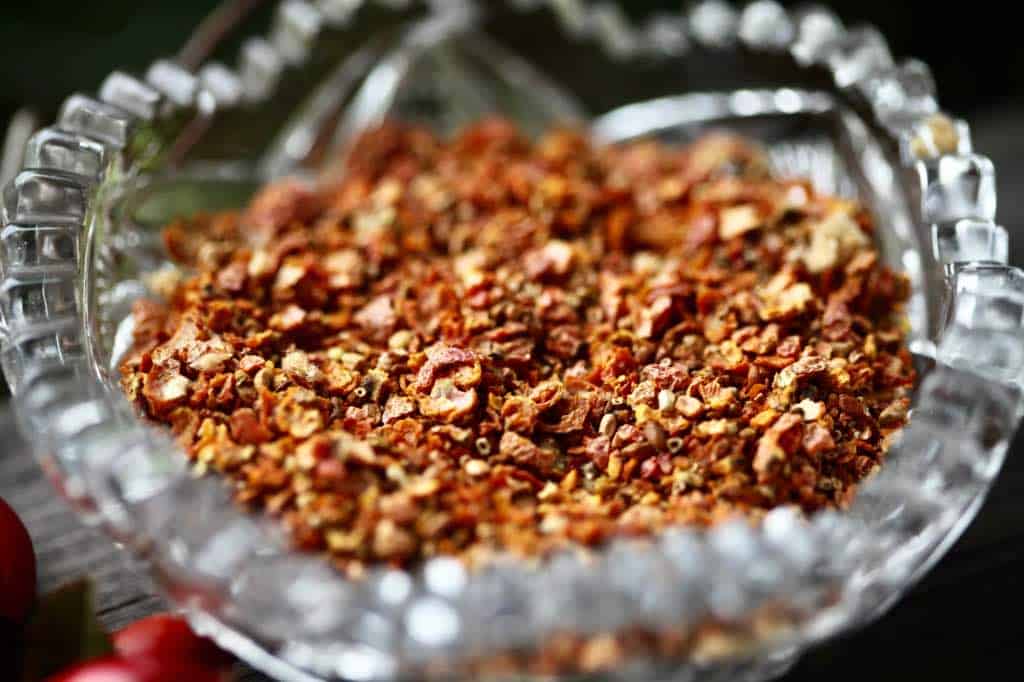
Store the dried rose hip pieces, free of the irritating hairs, until ready to use for tea, or other culinary purposes.
Storing Dried Rose Hips For Tea
Store rose hip tea in an airtight container, such as a glass jar. I like to store my dried teas in glass mason jars, as I love the look of having them on display.
Sometimes I will store the intact smaller roses, and process them just before using.
Store in a cool dark place for best shelf life.
The dried rose hip tea will last for up to a year if properly stored.
Make sure to mark the date of storage on the container.

Rose Hip Tea Recipe
Rose hip tea is very simple to make.
Ingredients:
- one tablespoon of dried rose hips
- one cup of water
- honey to taste (optional)
Directions:
- Boil the water.
- Add the dried rose hips to your favorite tea ball or tea bag.
- Place the tea ball with rose hips into the boiling water, and steep for 10-15 minutes.
- Add a little honey to taste, if you like a sweeter tea.
- The tea tastes delicious all on it's own, with the subtle floral taste of rose hips in a warm soothing drink.
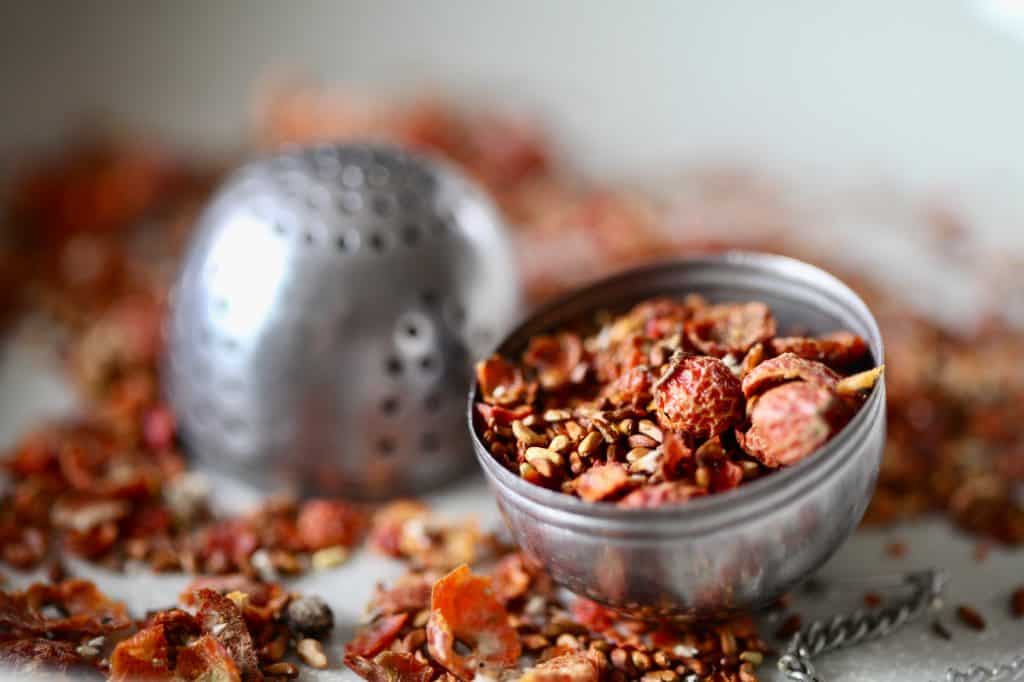
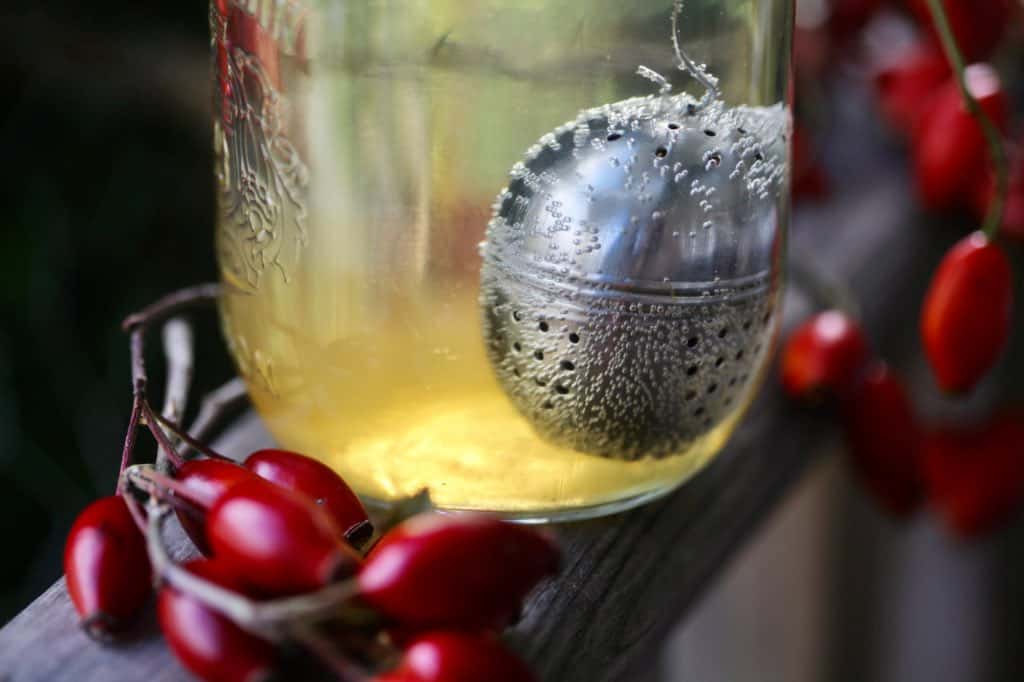
Conclusion
Rose hips are easy to harvest at the end of the season. The perfect time to harvest rose hips is after a light frost.
If you don't have your own roses, you can forage for tiny wild rugosa roses, and dry the rose hips whole for tea.
Consider harvesting this fruit of the rose, and then drying some for a rose hip herbal tea, which you can brew throughout the seasons.
Full of nutrients such as Vitamin C and antioxidants, this tea has been used throughout the ages as a heathy and nutritious drink.
Although it does take a bit of effort to remove the inside hairs, I would have to say, it is well worth the effort.
It was fun harvesting and drying the rose hips, and even sifting them clean.
It's also nice to have preserved something delicious from the garden, to have and to use, until next gardening season.
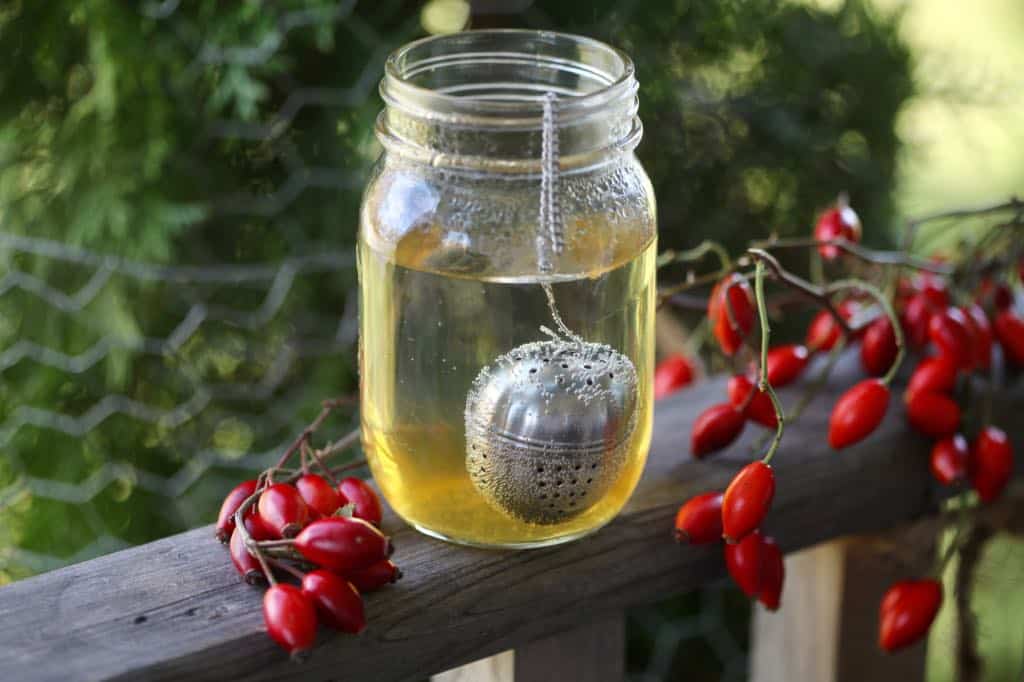
Hove you ever tried to dry rose hips for tea? Be sure to leave a comment below to share your experience!
Other Posts You May Like:
See the Web Story on Drying Rose Hips For Tea!
PIN IT FOR LATER!




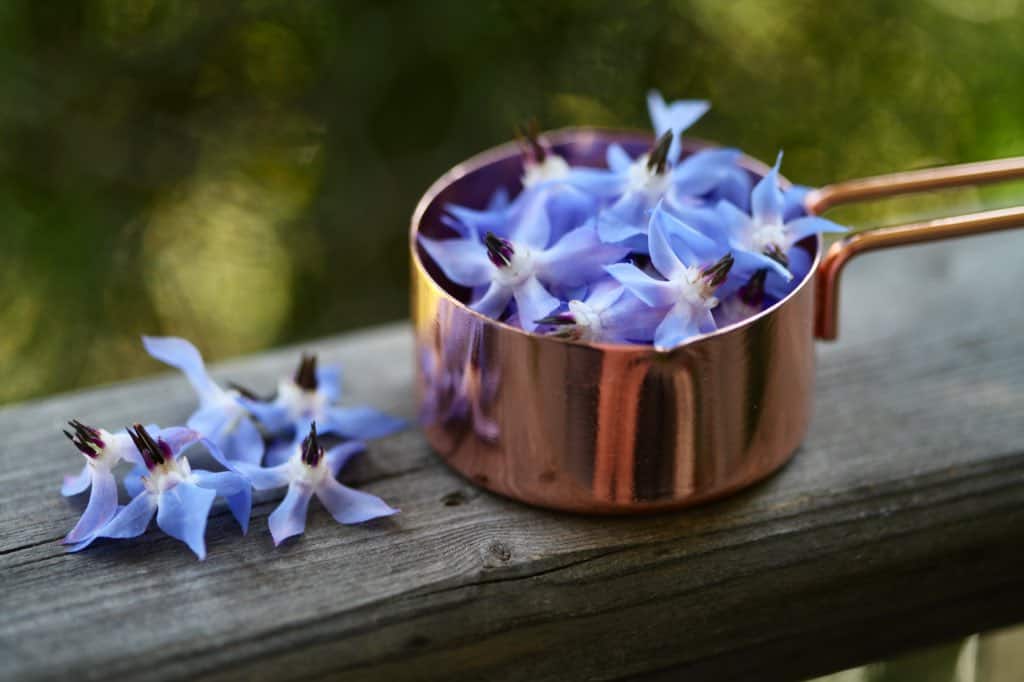
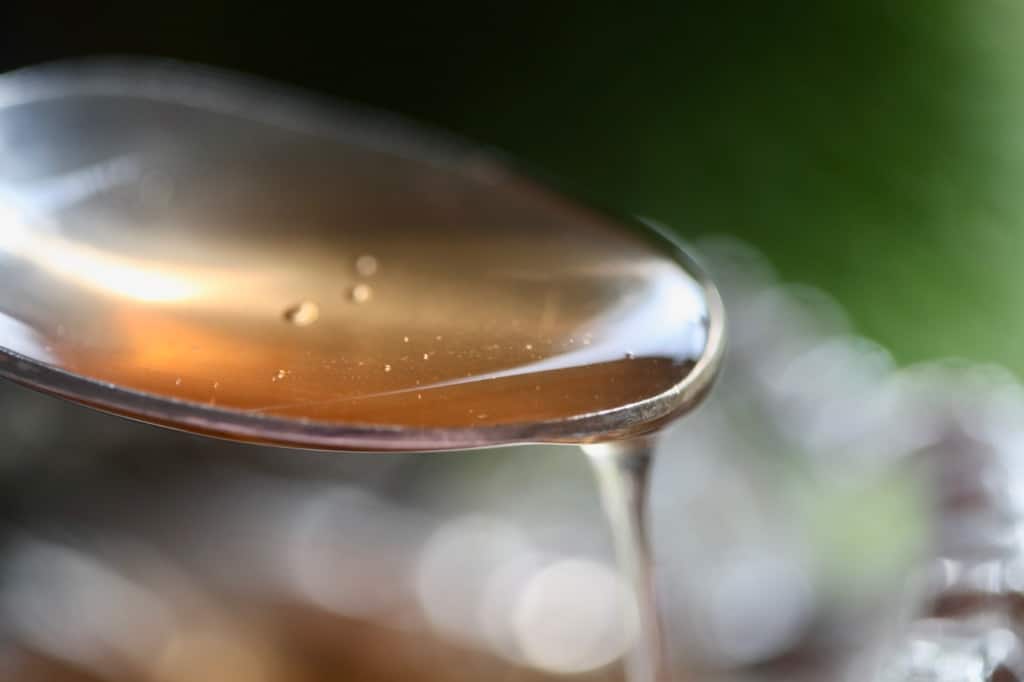


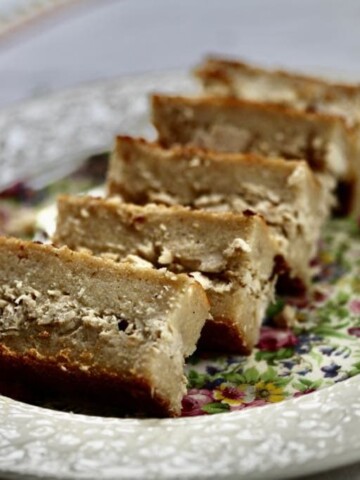

Leave a Reply